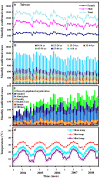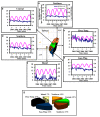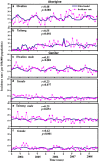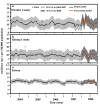Assessing trends and predictors of tuberculosis in Taiwan
- PMID: 22236209
- PMCID: PMC3285518
- DOI: 10.1186/1471-2458-12-29
Assessing trends and predictors of tuberculosis in Taiwan
Abstract
Background: Variety of environmental and individual factors can cause tuberculosis (TB) incidence change. The purpose of this study was to assess the characteristics of TB trends in the period 2004 - 2008 in Taiwan by month, year, gender, age, temperature, seasonality, and aborigines.
Methods: The generalized regression models were used to examine the potential predictors for the monthly TB incidence in regional and national scales.
Results: We found that (i) in Taiwan the average TB incidence was 68 per 100,000 population with mortality rate of 0.036 person-1 yr-1, (ii) the highest TB incidence rate was found in eastern Taiwan (116 per 100,000 population) with the largest proportion of TB relapse cases (8.17%), (iii) seasonality, aborigines, gender, and age had a consistent and dominant role in constructing TB incidence patterns in Taiwan, and (iv) gender, time trend, and 2-month lag maximum temperature showed strong association with TB trends in aboriginal subpopulations.
Conclusions: The proposed Poisson regression model is capable of forecasting patterns of TB incidence at regional and national scales. This study suggested that assessment of TB trends in eastern Taiwan presents an important opportunity for understanding the time-series dynamics and control of TB infections, given that this is the typical host demography in regions where these infections remain major public health problems.
Figures






References
-
- World Health Organization. Global tuberculosis control-epidemiology, strategy, financing, WHO report 2009 (WHO/HTM/TB/2009.411) 2010. http://www.who.int/tb/publications/global_report/2009/en/index.html
-
- Centers for Disease Control. Department of Health, Executive Yuan Taiwan. Taiwan tuberculosis incidence and mortality rate, 2002-2008 (in Chinese) 2009. http://www.cdc.gov.tw/public/Data/9123117163971.pdf
MeSH terms
LinkOut - more resources
Full Text Sources
Medical

